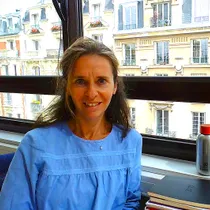- Accueil >
- Publications >
- Long-term T-cell reconstitution after hematopoietic stem-cell transplantation in primary T-cell–immunodeficient patients is associated with myeloid chimerism and possibly the primary disease phenotype
Long-term T-cell reconstitution after hematopoietic stem-cell transplantation in primary T-cell–immunodeficient patients is associated with myeloid chimerism and possibly the primary disease phenotype
Auteurs
Marina Cavazzana-Calvo, Frédérique Carlier, Françoise Le Deist, Estelle Morillon, Pierre Taupin, David Gautier, Isabelle Radford-Weiss, Sophie Caillat-Zucman, Bénédicte Neven, Stephane Blanche, Rémi Cheynier, Alain Fischer, Salima Hacein-Bey-Abina
Résumé
Abstract
We studied T-cell reconstitution in 31 primary T-cell–immunodeficient patients who had undergone hematopoietic stem-cell transplantation (HSCT) over 10 years previously. In 19 patients, there was no evidence of myeloid chimerism because little or no myeloablation had been performed. Given this context, we sought factors associated with good long-term T-cell reconstitution. We found that all patients having undergone full myeloablation had donor myeloid cells and persistent thymopoiesis, as evidenced by the presence of naive T cells carrying T-cell receptor excision circles (TRECs). In 9 patients with host myeloid chimerism, sustained thymic output was also observed and appeared to be associated with γc deficiency. It is therefore possible that the complete absence of thymic progenitors characterizing this condition created a more favorable environment for thymic seeding by a population of early progenitor cells with the potential for self-renewal, thus enabling long-term (> 10 years) T-cell production.
Membres


